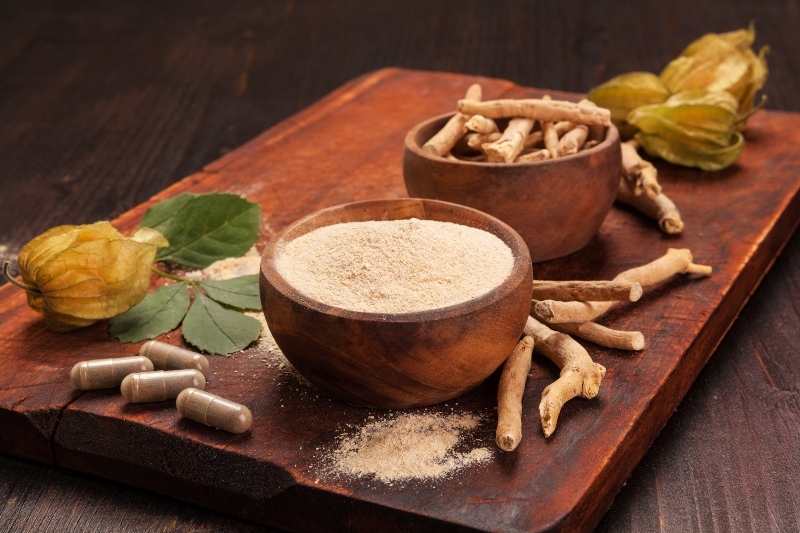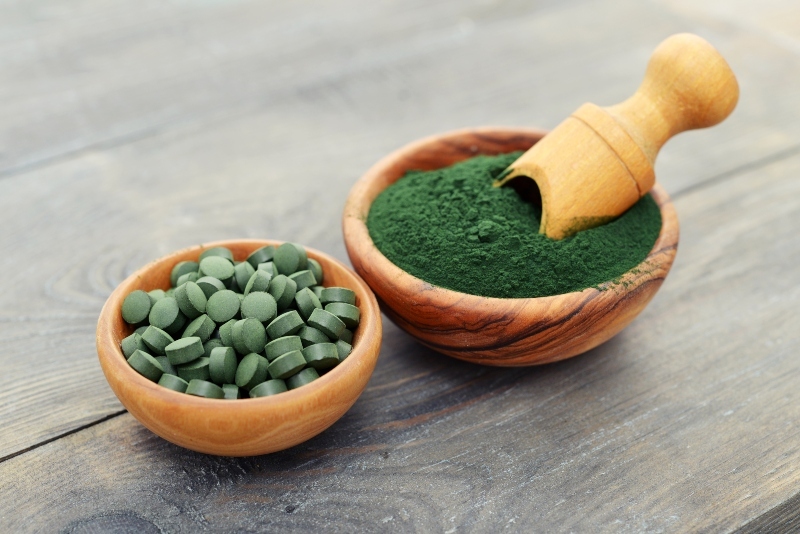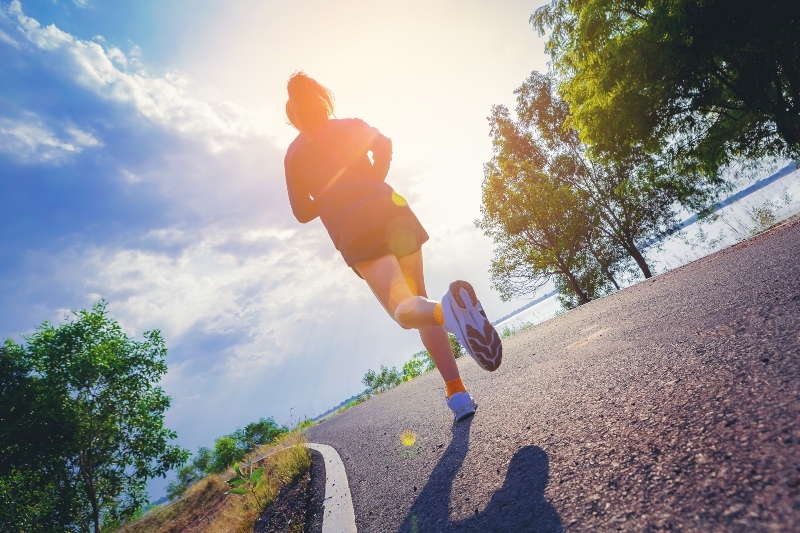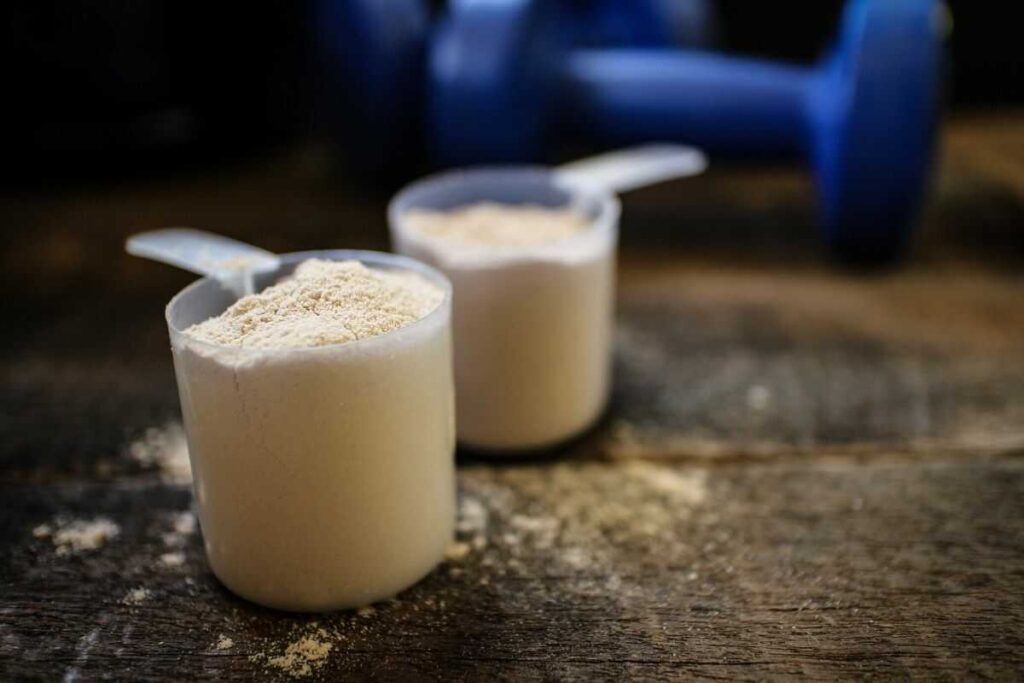The athlete’s body composition

Body composition analysis of an athlete.
The evaluation of the Composition corporearepresents an important research sector thanks to the information it can provide for the estimation of the energy needs, the nutritional status of the subject and for the consequent applications in the medical and health field. In fact, a long-felt need in the biological and medical sciences is the knowledge of the dimensional and morphological characteristics of the human body in its inter-individual indifference.
The study of body composition is of extreme importance both in the non-athlete subject, for the close relationships of health conditions, and in the athlete himself where it helps to define functional characteristics and abilities. Body composition differs significantly based on:
sex,
age,
genome,
pathological states,
diet,
physical exercise.
In relation to sporting practice and in reference to periods of intense training or after a sporting competition, the body undergoes more or less profound changes concerning its hydration state , the distribution of body fluids (intra and extracellular) , electrolyte balance and fat and bone muscle mass .
These changes can seriously damage physical integrity and consequently result in a decline in performance. As mentioned above, diet also has important repercussions on body composition and the need to lose weight, to fall into the “most convenient” category, leads many athletes to undergo “extreme” weight loss techniques, which were very common in the past (saunas, fasts , use of diuretics, etc.) which can adversely affect performance and affect the health of the athlete himself.
It is therefore essential and essential to evaluate the body composition (BC) in the athlete to monitor growth, training results, nutrition status, investigate the changes that occur on physical development in order to plan appropriate athletic workouts. ; have the predictive value for the aptitude selection in many sports activities and achieve an optimization of performance, achievable through the nutritional homeostasis that is obtained when the body weight is in a perfect ratio between fat mass (FM) and lean mass (FFM) . This ratio depends on age, sex, genetics and the characteristics of the sport practiced.
Two-compartment model
The two- compartment model is based on the model in which body weight (BW) is divided into two distinct chemical components, fat mass (Fat Mass, FM) and lean mass (Fat Free Mass, FFM).
FM
FFM
Fat Mass
The term Fat Mass or Total Lipid Mass indicates the total body adipose tissue which is always measured in kg, has a density of about 0.9 g / ml, is anhydrous tissue and does not contain potassium. According to Behnke’s model, the fat mass is found in two storage locations:
Essential fat and that is that small amount of fat mass essential for the body, present in the lipids of the cell membranes of the CNS and the PNS, between the muscle Fibre, in the bone marrow (yellow), of the long bones in the CNS and PNS, in the liver , in the spleen, lungs and heart; equal to 3-5% of the total body mass for the male and 10-12% for the female since it forms that tissue linked to secondary sexual characteristics.
Storage fat, consisting of the accumulation of fat in adipose tissue, composed of approximately: 83% of lipids, 2% of Protein and 15% of water. The storage fat is contained and divided into visceral and subcutaneous fat ; the first protects the internal organs from possible trauma of the thoracic and abdominal cavity, the second is located below the skin surface.
Lean Mass
The Lean Mass (Fat Free Mass, or mass free from fat) includes the rest of the body with an almost constant density from 1.099 to 1100 g / ml; it contains water in constant quantity (70-73%) with a density equal to 0.993 g / ml; otherwise it is made up of Protein, with a density of 1.34 g / ml; mineral salts (in particular those relating to the skeletal system with a density of 3 g / ml) and glycogen. Lean Mass has a potassium content of 69 mEq in the male, 10% less in the female. The “Lean Body Mass” or LBM (Lean Body Mass) is composed of all the tissues included in the FFM with the addition of the “essential fat”.
A constant fraction of the FFM is represented by water (Total Body Water, TBW). In a healthy adult, total body water (TBW ) constitutes about 72.4% (69.4-73.2%) of their lean mass and about 60% of their body weight. However, this fraction is not constant during the growth and aging of the body, as well as in many conditions of disease. While in infancy, at an early level, water constitutes about 80-83% of the alipidic mass, with advancing age this fraction decreases considerably. Obese people have a lower water content per kg of body weight than a thin person (women have less water than men).
TBW consists of the intracellular component ( Intra-Cellular Water, ICW) and the extracellular component (Extra-Cellular Warer, ECW) which are found, in healthy subjects, in a ratio of approximately 2: 1.
The ECW constitutes 20% of the BW (Body Water) (14 l) while the ICW, 40%. A basic index of well-being depends on the correct distribution of total water in the two compartments. In fact, it is not so important to know that our body contains for example 50 Lt of water, as its distribution; many studies confirm that normohydration is present only in healthy and well-fed subjects.
The extracellular compartment includes plasma, lymph, saliva, liquid compartments of the eye, digestive juices, sweat, cerebrospinal fluid, and liquid from the space surrounding the cells. Most of the liquid lost with sweat comes from the extracellular compartment, in particular from the plasma. Almost in all cases the variations in body water occur in this compartment, while the variations in plus or minus in the intracellular compartment are in the order of plus or minus 5%.
The different metabolic behaviors of FM and FFM
The division into two compartments, FM and FFM, is not only anatomical, but also functional, the two compartments have different metabolic behaviors . The most active behavior, from an energetic point of view, is undoubtedly the lean mass which, through its tensive commitment, allows the body to do a job. Increasing lean mass means increasing muscle mass at the expense of fat and, consequently, increasing the body’s need for calories, especially in conditions of absolute rest or Basal Metabolism.
Increasing or qualitatively optimizing the function of lean mass is beneficial for athletes whose discipline requires muscle strength, Energy and endurance. Clearly this increase in FFM implies an additional load to carry and even if made up of active lean mass, it could hinder performance; for this reason it is necessary to take into account the athlete’s athletic profile, his style, motor skills and skills acquired, in order to manipulate body composition and achieve an ideal body weight for the performance model.
The fat mass was once called “metabolically inert” that is, it was thought that the body did not cost anything in terms of calories expended for its maintenance. Today, however, it is known that this is not exactly the case, in fact, even if minimally, it also contributes to the total energy expenditure, as well as having a fundamental endocrine activity. Fat mass, despite having a fundamental role as the main energy reserve site and despite having its own metabolic activity, negatively affects performance, especially if present in excessive quantities for two fundamental reasons:
fat cells do not contribute to energy production, therefore to mechanical work, during physical activity;
transporting large quantities of fat has an energy cost which, in gravitationally loaded activities, can be not negligible “ballast effect”.
The greater percentage of fat constitutes, in fact, a “bulk” as it involves an increase in work without offering a metabolic contribution to the performance of the work itself (2). Several studies have shown that the higher the percentage of fat mass, the more the subject’s performance is reduced. Other studies have shown unequivocally that excess body fat is associated with poor performance in tests of:
speed;
resistance;
balance and agility;
jumping ability.
The ideal body composition varies according to the sport but, in general, the lower the fat mass, the better the performance.
Three-compartment model
The three-compartment model also inserts the bone component alongside FM and FFM .
FM
FFM (ECM + BCM)
BONES
In the three-compartment model the lean mass (FFM) is in turn divided into ECM and BCM which represent respectively the extracellular mass and the cell mass or Body Cell Mass.
The BCM represents the metabolically active mass, ie it is the human organism containing potassium component that consumes oxygen and occur where the oxidation-reduction reactions (Moore et al. 1963). It is a fundamental functional compartment in determining energy expenditure, protein needs and the body’s metabolic response to physiological and pathological stimuli. Oxygen consumption and energy expenditure are closely correlated with BCM. In particular, the oxygen consumption varies from 8 to 10 ml per kg of BCM, while the energy expenditure is 2.7-3.6 kcal per hour per kg of BCM. BCM can also be considered as the set of “fat-free” cells of muscles, internal organs and the immune system.
The BCM represents an indicator strongly linked to the metabolic and functional parameters of the organism very useful in defining the athletic ability and the state of health of athletes, even more than fat mass and lean mass as also demonstrated in recent scientific studies conducted on various groups of athletes, in fact BCM is very developed in athletes and is small in sedentary people, this is one of the main reasons why sedentary people, even eating less, tend to gain weight compared to the active population. This fact can be explained by a lower metabolically active mass and therefore the body consumes fewer calories and therefore we tend to gain weight.
The BCM is therefore a parameter highly more indicative of the “state of form” of an athlete compared to the simple lean mass, and is measured through very sophisticated, expensive and invasive techniques but, also, indirectly through the impedancemetry (BIA) starting from the assumption that the cell has a water content equal to 66% of its weight, the BCM can be considered as the product of the intracellular potassium concentration by a numerical factor (0.00833).
The ideal body composition varies depending on the sport but, in general,
the lower the fat mass, the better the performance . Per the purposes of performance, the level of adiposity is more decisive than the total body weight, so the lower the relative fat mass, the better the sports performance .
It is therefore essential for athletes to be very careful when following a diet to maximize weight loss at the expense of fat mass (FM), trying to minimize lean mass loss (FFM). It is also important to combine training with diet, to achieve the energy deficit necessary for the daily negative energy balance.
Voluntary dehydration , is probably the most used technique for the rapid mode of weight loss, and even the most specialized to produce massive loss of body water. Fasting or lightning diets with a very low calorie content lead to significant weight losses, where a very negative energy balance inevitably leads to high losses of body water due to the degradation of glycogen and Protein.
Weight Loss Period (with low calorie and low carbohydrate diet)

Dr. Carmine Orlandi.
Fluid Loss.
Alteration of the buffering qualities of the Blood and Muscle.
Decrease of alkali reserves, at rest.
When athletes try to maintain a lower than physiological body weight , they face the aforementioned problems. These athletes often find themselves in a chronic state of energy deficit (E expenditure> E made; in a variable period from days to months). In Athletes , Loucks & Heath 1994 , demonstrated that when the energy deficit exceeds a certain critical level, reproductive and thyroid endocrine functions are repressed .
One of the problems that most afflicts women athletes concerns amenorrhea, which in turn is heavily implicated in what is the major pathological aspect of weight loss in female athletes : the athlete’s triad.
There are several explanations given on amenorrhea and the main causes of this seem to have been identified between imbalances in body composition (too lean), physical stress (workouts that are too hard and repeated) and energy balance (too little energy intake); several recent studies focus their attention on this last point, defining excessive energy restriction to which athletes undergo in order to return to the predetermined weight.
With Rapid and Moderate weight loss , there will be reductions in the total amount of body water, and in hepatic and muscle glycogen reserves, and in other components such as lean mass (FFM) and some fat mass ( Oppliger et al. 1996). ). Most athletes are already very thin by the time they reach weight, and so only a fraction of the weight they will lose will come from fat stores. In fact ( Friedl et al. 1994 ), they reported that there is probably a lower limit of fat loss with weight loss in lean individuals.
Therefore, as the athlete achieves a low level of fat mass, there is a reduced likelihood of future loss of body fat with prolonged weight loss. Consequently, the percentage of weight loss from lean body mass degradation during a period of rapid and moderate weight loss is likely to be high.
Generally, decreases in performance are associated with loss of lean mass.
On the basis of all these indications it is still difficult to draw general conclusions on the action exerted by the Weight Loss on Performance , but it is certain that a reduction in lean mass due to a low protein intake in the diet, involves a decrease in the body’s ability to Energy.
Strength reduction should be taken more seriously, as Energy is a prerequisite for success , and this conflicts with the theory that weight reduction allows the athlete to gain a competitive edge.
Concepts shared by many authors through various studies conducted on performance (performance) by means of tests that take into account the specificities of the sport, confirm that the “rapid achievement of Weight” involves a clear negative action on the physical performance of athletes, with decay of the performance.
A rapid weight loss is linked to a reduction in performance, and has the following effects:
Decrease in blood plasma volume;
Disorder of the mechanisms of thermoregulation;
Depletion of glycogen stores and blood buffer systems;
Protein degradation with decreased strength capacity .
In relation to what has been stated, it can certainly be said that Strength is a determining condition, but it is not the only factor that must be taken into consideration to achieve success in a sports competition. Therefore the best athletes are those who are able to reduce their weight while maintaining stable levels of strength and Energy , limiting the loss of lean mass.
As can be easily understood, the parameters of weight and height alone are often misleading and do not satisfy the need to be able to accurately frame the status of the individual athlete. This is why it is necessary to focus on more accurate methods.
Our experience with the Olympic athletes of the Italian National team

The work was conducted on 22 athletes from the disciplines of Judo, Wrestling, Boxing and Weightlifting who participated in the 2008 Beijing Olympics.
As regards the assessment of body composition, the gold-standard methodology is the “dual-energy x-ray absorptiometry (dxa)” – through which in our laboratory at the chair of “Food and Human Nutrition” – Department of Neuroscience – faculty of Medicine of the University of Rome “Tor Vergata” we study the body composition of professional athletes;
Still on the subject of body composition and evaluating the health of bone tissue, Conroy et al. observed that the bone density of weightlifters was higher than that of other athletes, especially female athletes.
The methodology followed in the “weight loss” period, basically conducted up to the day of the competition and for the entire period of competitions, provided for the following standardized scheme:
Periodization of nutritional strategies in accordance with the periodization of training
Continuous monitoring of qualitative and quantitative results (body composition analysis and weight diary)
Awareness and “complicity” of athletes and full technical staff
Significant reduction of weight fluctuations (weight cycling)
Maximum possible fractionation of calories in the day
Strict application of the “recovery meal”
Energy input equal to the measured MB (indirect calorimetry) + 15%
Bromatological composition of the diet based basically on the QR
Recovery times between “making the weight” and the start of the competition.
How long until the competition
Always consider the athlete’s mood swings
Preparation of specific “nutritional goals”
the path most followed was that of connecting nutrition between the training period aimed at the competition and the competition itself. also in this case we followed a standardized methodology:
Individualized nutrition in the different training periods
Recovery meal (post-workout)
Race period feeding
Energy supply the day before the race
Pre-race nutrition
Waiting ration
Post-race nutrition (recovery)
Possible integration
Our athletes, thanks to the integrated work of all the actors who have gradually presented themselves in the different phases of training and qualifying competitions in previous years, always within a multidisciplinary path shared with the technicians, have brought back 5 medals, 3 gold, one silver and one bronze in the total of the disciplines considered.
The nutritional treatment we propose provides for an energy quantity correlated to the individual situation and confirmed by the continuous monitoring of the body composition; the distribution of macronutrients follows a rationale based on the position statement of the ISSN which provides for a fundamental qualitative and quantitative respect for the timing of recruitment in relation to exercise in open contrast to what has been stated so far, namely that the nutrition of a professional athlete must not differ from the nutritional guidelines to be applied normally to the population except the energy aspect.
It is evident that the distribution of muscle tissue is similar for all types of sports analyzed (but with different weights). By means of the Student’s t test for independent data, the differences in the variables considered were evaluated between groups and the significance of the differences between sports and muscle mass was verified with the t test for paired data. The significance was set a priori at 5% (p <0.05): in simple words, therefore, the distribution of muscle mass in these sports can be considered similar even if we repeat, with different weights; however, this discourse has not been made for what concerns the fat mass;
Conclusions
In conclusion, given the data on the distribution of muscles, these parameters and also compared with those of athletes of other disciplines, we can say that these guys, like few others, have exceptional starting points on which, through appropriate nutrition and training, it is possible to build real champions.
The results of the data show that a careful assessment of body composition and its monitoring over time correlates well with the fitness state of the athletes and that a correct and appropriate diet can be initially established and possibly modified over time if, however, this is continuously monitored also in order to significantly reduce the number and extent of injuries at the end of a long and stressful season .
The data analysis however confirmed the validity of an assumption that has always accompanied the treatment modalities of professional athletes according to which a careful, correct, appropriate and personalized diet is able to enhance individual athletic preparation thanks to a synergy whose mechanisms, as by now copious literature, are beginning to be well known.
The constant evaluation of the body composition remains a reliable, fast and simple method and if carried out by combining the 2 main techniques currently used in the literature, DXA and BIA, it allows a reliable evaluation of the main organic components: fat mass, muscle, bone mineral content , distribution of body fluids, BCM active cell mass and phase angle f.
Ultimately, having available a machine such as DXA that allows you to do a body composition analysis (fat mass, lean mass, bone tissue) by sections and having not found national and international studies in this regard, we have studied the distribution of physiological compartments in the following body areas: arms, trunk, legs of the percentage of lean mass.
Contrary to what one might think, we have found that the distribution of muscle tissue is not particularly affected by the sport being practiced , as it does not produce “important” “local hypertrophy” adaptations in those districts that, on the basis of the sport practiced, “would seem more stressed”. This situation is also confirmed by making a subdivision of the study groups into males and females. To give a statistical value and to exclude randomness in this part of the study, we carried out a significance test, which gave positive feedback on the reliability of the data.
Most of the works extracted from the scientific literature show that the respect of nutrient intake according to a certain timing that takes into account the various periods of athletic commitment (light training, workload, daytime competitions, night competitions, close competitions, etc. ) leads to a significant improvement in athletic parameters as well as a reduction in the number and / or extent of injuries.
We basically referred to these indications always following the criterion of maximum compliance of the athlete and the technical-health staff, and over the months we have had a very high degree of acceptance and satisfaction with the proposed protocol.
In conclusion, we believe that we cannot ignore the assessment and monitoring of body composition in the treatment of the athlete, both from very young for a complete physical maturation, and in the elite athlete. Per a reliable and complete assessment of body composition, the combination of BIA with DXA is essential for a “360 °” assessment that takes into account the muscle and adipose tissue of the intra and extra cellular water.
The equation for the estimation of body fat especially for the high-level sports population must be calibrated on the sample with anthropometric characteristics as specific as possible to the population sample analyzed, taking into account the peculiarities of strength and techniques.
Expand the sample of athletes to understand if the distribution of muscle mass maintains the characteristics of uniformity independent of the sport practiced by us found in the initial phase of the study.
Finally, given the data on the distribution of muscles, from these parameters and also compared with those of athletes of other disciplines, we can say that these guys, like few others, have exceptional starting points on which, through appropriate nutrition and training, it is possible to build real champions. Our goal therefore is to make the genetic potential (already conspicuous) express to the maximum, hoping for excellent results in the next international competitions.
Bibliographical references
CONVERTINO VA, AMSTRONG LE, COYLE EF et al. “Exercise and Fluid Replacement,” American College of Sports Medicine official position . Medicine and Science in Sports and Exercise . Vol. 28, No. 1. 1996.
DAL MONTE A. & FAINA M. “Evaluation of the athlete – Functional and biomechanical analysis of performance capacity” . Sport Sciences Series – UTET, Turin
W. D McArdle, Katch FI, Katch V. L . “ Nutrition in SPORT” . Ambrosiana Publishing House, Milan 2001.
McARDLE W. D, KATCH FI, KATCH VL “ Physiology applied to SPORT” . Ambrosiana Publishing House, Milan, 1998
OPPLIGER RA, CASE HS, HORSWILL CA et al . “Weight Loss in Wrestlers” , American College of Sports Medicine official position . Medicine and Science in Sports and Exercise . Vol. 28, No.2. 1996
ROEMMICH J. N. & SINNING W. E. “Weight loss and wrestling training: effects o nutrition, maturation, body composition and strength”. Journal of Applied Physiology 82 : 1751-1759, 1997.
TIMPMANN S. & OOPIK V. “The Influence of Weight Reduction on Performance in Combat Sports“ . Athlon 10/2005, 1-2/2006.
WILMORE J. H. “Weight Category Sports“; Parte 4, Cap. 49, in MAUGHAN R.J. “Nutrition in Sport“Volume VII of the Encyclopaedia of Sports Medicine, in collaboration with the International Federation of Sports Medicine. Blackwell Science, 2002.
WILMORE JH & COSTILL DL “Physiology of physical exercise and sport” ; Cap .: 1,4,5,7,10,13,14. Calzetti Mariucci editors, Perugia 2005.
DI FELICE U., MANNO R. “Weight loss and sports”; Mariucci Socks – 2010
Arkh Anat Gistol Embriol. 1989 Oct;97(10):77-9. [Changes in body composition and motor skills of young weight lifters during physical training]J Strength Cond Res. 2006 Nov;20(4):861-6. Anthropometric and performance variables discriminating elite American junior men weightlifters.
Fry AC, Ciroslan D, Fry MD, LeRoux CD, Schilling BK, Chiu LZ. Med Sci Sports Exerc. 1993 Oct;25(10):1103-9.Bone mineral density in elite junior Olympic weightlifters. Conroy BP, Kraemer WJ, Maresh CM, Fleck SJ, Stone MH, Fry AC, Miller PD, Dalsky GP.
Coll Antropol. 2006 Sep;30(3):607-13. Modeling the influence of body size on weightlifting and powerlifting performance. Markovic G, Sekulic D.
De Lorenzo A, Andreoli A, Serrano P, D’Orazio N, Cervelli V, Volpe SL. Body cell mass measured by total body potassium in normal-weight and obese men and women. J Am Coll Nutr 2003; 22(6): 546-9
Prior BM, Modlesky CM, Evans EM, Sloniger MA, Saunders MJ, Lewis RD, Cureton KJ.) (J Appl Physiol. 2001 Apr;90(4):1523-31. Muscularity and the density of the fat-free mass in athletes.
Prior BM, Cureton KJ, Modlesky CM, Evans EM, Sloniger MA, Saunders M, Lewis RD.), (J Appl Physiol. 1997 Aug;83(2):623-30. In vivo validation of whole body composition estimates from dual-energy X-ray absorptiometry.
Melchiorri G, Monteleone G, Andreoli A, Callà C, Sgroi M, De Lorenzo A.). Body cell mass measured by bioelectrical impedance spectroscopy in professional Calcium (soccer) players. (J Sports Med Phys Fitness. 2007 Dec;47(4):408-12.
De Lorenzo A., Fidanza F. The assessment of body composition and detection of food consumption, 2007, Ed. Idelson Gnocchi.
E.Toussirot, F. Penfornis, D.Wendling, Precision Evaluation of Lunar iDXA Body Composition Measurements, ASBMR Annual Meeting; September 2007, Honolulu,HI, USA
Scand J Med Sci Sports. 1998 Oct;8(5 Pt 1):271-8.Body composition and cross-sectional areas of limb lean tissues in Olympic weight lifters. Kanehisa H, Ikegawa S, Fukunaga T.
Am J Prev Med. 2010 Mar;38(3):279-87. Exercise, body composition, and functional ability: a randomized controlled trial. Kemmler W, von Stengel S, Engelke K, Häberle L, Mayhew JL, Kalender WA.
J Sports Med Phys Fitness. 2005 Mar;45(1):77-83. Profiles of muscularity in junior Olympic weight lifters. Kanehisa H, Funato K, Abe T, Fukunaga T.
J Strength Cond Res. 2006 Nov;20(4):861-6. Anthropometric and performance variables discriminating elite American junior men weightlifters. Fry AC, Ciroslan D, Fry MD, LeRoux CD, Schilling BK, Chiu LZ.
















